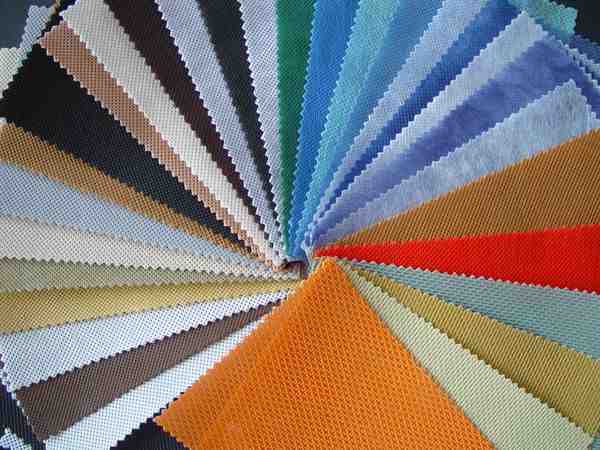Non Woven Fabric Manufacturing | Types | Classification & Examples
Staple fiber and continuous fibers are combined with the help of mechanical, chemical, solvent, or heat treatments to form a nonwoven fabric. It is a fabric-like material, and the term resonates with fabrics such as felt. The staple fibers are the short fibers, and the continuous fibers are longer when compared to the staple fibers. Often nonwoven fabrics are reinforced to improve the strength of the fabric.
What Is Non Woven Fabric?
PP as a material is resistant to stains and wear. The chemical inertness of the fabric makes it an excellent choice for use in acidic environments. The spunbond nonwoven fabric is made through a process of fibers spun and dispersed into a web-like deflector. Airstreams can be employed for better dispersion.
Raw Materials For Non Woven Fabric
Fibers to blend for nonwoven fabric are chosen based on properties and use of the resulting material. The expected performance of the fabric depends on the fibers chosen to make or reinforce the nonwoven fabric. Different threads are used in different ratios to ensure the resulting perfect material. Polyester is one of the standard fabrics used to make nonwoven fabric combined with olefin and nylon for strength. Cotton and rayon fibers are added to improve the absorbency of the material. Acetate, vinyon, and acrylic fibers are also combined with other fibers.
Virgin fibers cost more, thus increasing the price of the final product. The fibers used and the method employed to develop the nonwoven fabric determine the final price of the material.



Classification & Types of Non Woven Fabric
A wide variety of nonwoven fabrics can be developed depending on the manufacturing process. Some types of nonwoven fabrics are discussed below:
Spun-Bonded Non Woven Fabric
Polymers are used to develop Spun-bonded nonwoven fabric. The polymer fibers are made to go through the extruder, stretching it to a continuous filament which is further spread evenly and laid in a web. The melting and spinning process results in an inter-tangled web of fibers. After chemical, heat, or mechanical treatment of the resulting web forms the final fabric.
Spunlace Non Woven Fabric
This unique nonwoven fabric gets its name from the fantastic process of its making, where high-pressure water jets are utilized to entangle and combine the web of multiple layers of fibers. The high pressure reinforces the threads, but the resulting yarn is not as strong as other nonwoven fabrics. Often fibers like silk, polyester, nylon, bamboo fibers, wood pulp, viscose fibers are used to develop Spunlace, which is used to manufacture disposable surgical gowns, filters, face masks, wet wipes, etc.
Heat Bounded Non Woven Fabric
The primary binding process for this nonwoven fabric is heated. The fiber webs are taken together with adhesives and treated with high heat. The bonds in the layers of fibers get melted by applying heat. On cooling, the web of fibers gets combined into a single nonwoven fabric.
Melt-blown Non Woven Fabric
A complex, systematic process is adopted to develop and manufacture melt-blown nonwoven fabric. The melted polymer fiber is extruded through a die with hundreds of tiny holes in it. The holes are the dimensions of the resulting fibers. Hot air is blown over the threads to cool them, and the fiber webs are collected on a collector screen. It is here that the fibers combine to form the nonwoven fabric.
Wet Non Woven Fabric
The raw material that is the fibers are placed in an aqueous medium. It helps the fibers to unfurl into single fiber strands. Different types of fibrous raw material are added to the suspended fibrous mass to form a slurry. This slurry-like mass is treated to form the nonwoven fabric.
Stitch-Bonded Non Woven Fabric
This wrap knitted loop structure nonwoven fabric gains strength from its layers, reinforcing the structure of the final material, making it strong. The various layers include fiber web, yarn layer, etc.
Hydrophilic Nonwoven Fabric
The hydrophilic nonwoven fabric is used to manufacture sanitary material and other medical grade or surgical material. The material is soft to touch and sensitive to skin.
Properties of Non Woven Fabric
There are numerous uses of nonwoven fabrics in the modern world. Affordability of the fabric is one of the reasons for the rise in the use of the material. The biodegradable nature of the nonwoven fabric makes it a great choice over plastic. Nonwoven fabric is not suitable for making clothing due to durability issues. Still, it is excellent to manufacture single-use medical equipment. Nonwoven fabric is replacing polyurethane foam at a steady pace. Bags and other supply materials can be made from nonwoven fabrics. The fabrics are waterproof, making them an excellent choice for this utility.
Rajshree fabrics have always maintained its high-quality standards when it comes to meeting customer requirements. We manufacture and supply high-quality, specialized nonwoven fabric all over the world. Get in touch with us for your nonwoven fabric requirements.
